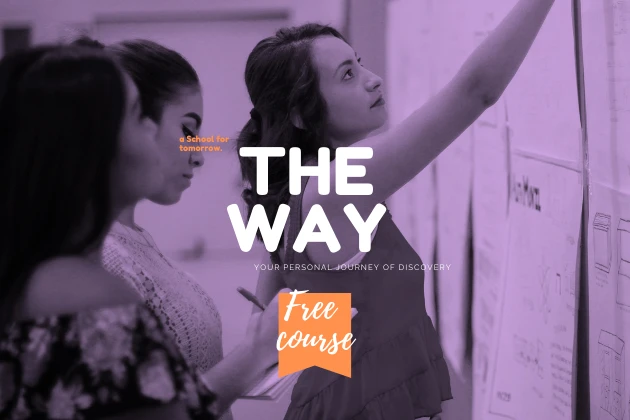-1.png?height=400&name=Learning%20(2)-1.png)
Dr Phil Cummins
Jul 4, 2023 | 27 minute read
Building Student Agency Through High Performance Learning
Dr Phil Cummins explores the relationship between agency and high-performance learning in schools of character.
Promotion
a School for tomorrow's
A School for tomorrow. Global Community
Join our global community of innovative, like-minded people and schools who are exploring today's learning for tomorrow's world.
Join Community1. Introducing The Imperative For Agency Through High-Performance-Learning
At a School for tomorrow. and Game Changers, we have been arguing for the best part of a decade now that “character is the reason why we do school; it’s the whole work of a school.” Increasingly, many schools are recognising this call to do the work of character education as the essential purpose for how they organise their work and serve their communities.
So, what’s next in character education? Around the world, we are seeing a greater recognition of the imperative for student voice, agency and advocacy in their learning. In particular, I want to draw attention in this article to the character of an education for agency and the character of student agency within this.
The OECD notes in their 2023 report, Student Agency for 2030, the desirability of students playing an active role in their education, especially in respect of what and how they learn. Students who have this type of agency are much more likely to have learned how to learn for life. They emerge into their adulthood with an agency that implies the ability and the will to influence their own lives and the world around them. This agency must be built on layers of foundational skills; there are fundamental building blocks of knowledge, skills, dispositions and habits which need to be acquired before this agency is fully formed. This relies on supportive learning relationships in which students co-design and co-construct solutions that help them achieve their learning goals.
At a School for tomorrow. and Game Changers, we believe that educators need to recognise the necessity of their role in affirming the capacity students have to make and carry out their own choices in life. We want them to help their learners to set constructive and attainable goals for themselves. We want them to encourage their students to reflect on their emerging sense of agency, as they adapt to their changing circumstances with creativity and judgement.
We need to take seriously the opportunity to enhance the agency of learners everywhere by helping them to build the character, competency and wellness they need to thrive in their world. We need to encourage them and ourselves along the way to see what it is that we can do (when we harness everything at our disposal) to foster the adaptive expertise and self-efficacy to learn, live, lead and work with the confidence to make a difference for people and place and planet.
As teachers, therefore, we need to support our learners to:
- Collaborate with their teachers, mentors, experts and peers in the exchange of mastery
- Grow in the performance character that fulfils potential through purpose, persistence, and reflection
- Test possibility and acquire an increasing agency that is also open to the gifts of others
The increasing permissioning of choice that underlies agency can allow students to step into their experience with greater confidence and to explore what they might know, do, be and learn through the adaptive expertise and self-efficacy required to thrive in their world.
An education for agency, therefore, arises from our normal and human need to form relationships that provide meaningful encounters that shape our ideas about self, place and the other. In school, agency is nurtured through exchanges with teachers, mentors, experts, and peers within learning that is accessible, rigorous, and relevant.
We can call this “high-performance learning.”
High-performance learning is the willing adoption of a purpose-driven approach to the unrelenting pursuit of better outcomes for more learners. It is a methodology for deliberately shaping whole-school culture and both the individual learning journeys and also the collaboration that takes place within it so that the educational vision of a school to support people becoming the best versions of themselves becomes “the way we do things here”. It supports and serves a school’s ethos by enacting it and serving as an exemplar for how to “get it and get there” – it does not replace it.
The agency imbued by high-performance learning equips, empowers and enables students to test what’s possible and act with an increased sense of purpose that can guide them to thrive in their world.
We can test the relevance and quality of an education for agency in this construct of high-performance learning by asking that question posed to us originally by our Game Changers Podcast Series Eight guest Will Richardson: are we really preparing kids for their world? Educators at the chalk face often wonder how best to answer these questions in ways that will translate this type of question into the specifics of practice. They want to know what successful agency looks like, the character of the high-performance learning that supports it, the learning behaviours that comprise it, and the types of school communities that foster and encourage such behaviours. These four topics will guide the structure of the rest of this article as we seek to answer the provocation for this article: are we really preparing students with high-performance learning that will equip, empower and enable them with the agency they need to thrive in their world?
2. Identifying Success in Student Agency
So, first, what does success look like in establishing student agency through a high-performance learning culture in a school?
In a high-performance learning culture, the student experience of a whole education for character, competency and wellness should be an aligned educational process of growth and development that involves the deliberate, targeted, and intentional design and delivery of learning through a documented and cascading framework for education. Student growth should occur everywhere in a school and be sustained by the honourable traditions and customs that provide meaning and order. Student development will be propelled by specific pedagogies and especially through powerfully formative relationships of character apprenticeship.
Our own research into character education globally since 2011 teaches us that good schools get the fundamentals right while great schools assemble the ingredients of high-performance learning culture in delivering this education. In our global research program, we have observed that good schools tend to adopt three trajectories in their strategic educational development work.
First, good schools examine character, competency, and wellness in depth. These schools place character, competency and wellness at the core of the work of education – it is seen as the essential preparation for students to thrive in the new world context, not as an additional thing to be done. Effective solutions are not pre-packaged but build on the exemplars of others while also taking into account the needs and culture of a school’s unique context. They develop an evidence-based approach to describing and implementing both a framework for an education for character, competency and wellness, and an ongoing conversation within their communities about how best to ensure the practice of a school is world-class in its approach.
Good schools are also thorough about educating their students for character, competency and wellness. A strategic and intentional approach towards an education for character, competency and wellness is observably and tangibly more successful than reliance on assumptions about what might be happening in classrooms and other learning environments. The accidental and incidental ‘caught, not taught’ approach fails to provide high quality high-performance learning for character, competency and wellness to all students. Good schools want to work towards systematic formal and informal means of character education for each student, implementing a range of both proven and innovative collective, collaborative and personalised strategies that are regularly evaluated for their quality and effectiveness.
Finally, good schools measure what they do. This is based on a belief that the character, competency and wellness of learners can be described and that changes in student outcomes in these areas can be both tracked and measured in a variety of qualitative and quantitative ways. The impact of an education for character, competency and wellness within high-performance learning is also measured, allowing schools to know where there is good value in exerting their efforts and resources. Good schools develop systems that help them to replace assertion based on anecdote with knowledge based on evidence in the discourse of every member of the community especially when it comes to a high-performance learning for character, competency, and wellness. They gather data progressively and conduct appropriate analysis of results across all key competencies and external benchmarks, as well as appropriate measurement of levels of wellness. Evaluation of this data takes place in alignment with the values, principles, and purpose that comprise a school’s ethos and define its values proposition and value proposition. At the same time, good schools should implement evaluation processes to demonstrate the development of the supportive school climate that actively encourages holistic student achievement levels. They must make deft judgments about the correct placement of evaluation systems and processes. They must also determine the right measures to prioritise the right type of holistic student achievement within the warp and weft of school life.
Further to this, good schools can successfully articulate the values and value proposition that honours what we believe is the new social contract of education: today’s learning for tomorrow’s world. The values proposition should speak to the development and embodiment of the school’s values in the transformation of learners, educators, and families. The value proposition needs to show some tangible benefit to this process of transformation that speaks to:
- Valuing education: Placing a high value on education that is tangibly reflected through levels of funding, attitude, support, and community involvement.
- Valuing teachers: Encouraging school stakeholders to take concrete actions to connect with, support and value teachers, through recognising the importance of their work and understanding that their profession is complex.
- Valuing improvement: Developing teachers through mentoring, classroom observation, and constructive feedback to become more professional and more collaborative in all areas of practice, especially in tracking and diagnosing the nature and progress of an individual child’s learning
At the heart of all of this needs to be the imperative for positive change in the capacity of learners to thrive through growth in their character, competency, and wellness. Students need to be able to map their journey towards transformation and present a story of their yesterday, today and tomorrow that tracks the development of their voice, agency, and advocacy.
The experience of school for learners should be, therefore, a wide field in which we inspire, challenge, and support learners to rehearse for their adulthood by providing many diverse encounters with and experiences of competency within deliberately incremental and immersive learning. Like the mediaeval tales of old and the computer games students play now, the challenges must become harder and more important as the quest goes on.
In this way, the experience of growth and transformation in the high-performance learning culture of a school for a learner (be that an adult, adolescent, or child in whatever capacity) must be about becoming someone new – a better version of yourself with the agency to make a difference in your world.
This process of transformation can often be frustrated by a personal reluctance to let go of the person who once was (something which poorly informed and utilised cultures of tradition can unwittingly abet) instead of honouring the process of gaining expertise through a relationship of character apprenticeship that can show you where your future might lie and how to explore the possibility that this might entail.
We at a School for tomorrow. and Game Changers have a model of experiential education that might provide us with a good starting point for understanding the process by which the development of the child and the development of character intertwine:
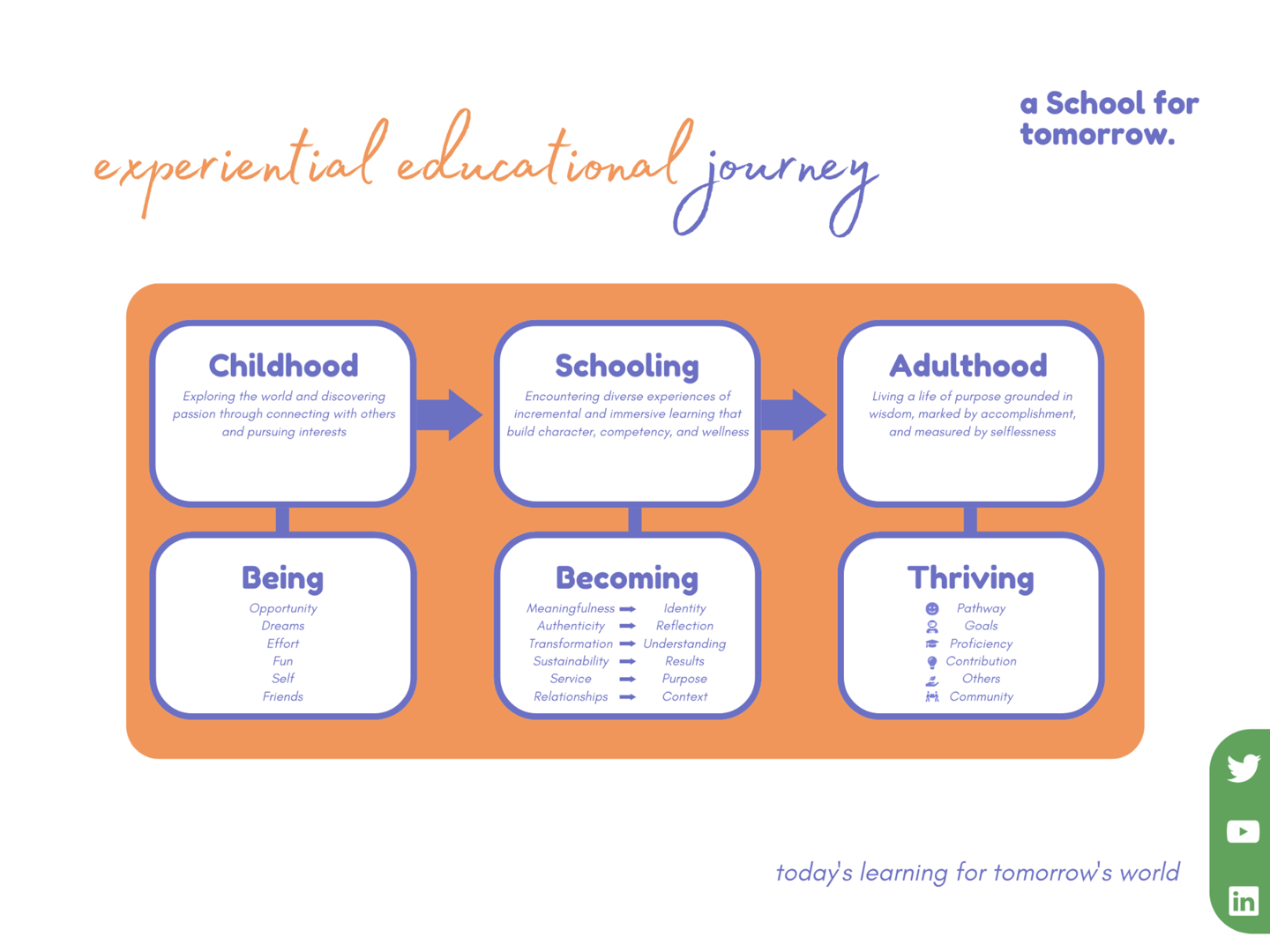 Figure 1: The a School for tomorrow. Model of The Experiential Education Journey
Figure 1: The a School for tomorrow. Model of The Experiential Education Journey
Our Model of Experiential Education for Growth and Transformation is, therefore, about moving from childhood to school as a preparation for and rehearsal of adult life. Students may resist the compelling imperative of its realisation along the way – in their adolescence in particular they like their fun and enjoy what is done in the moment. They don’t necessarily want to be told what to do all of the time and many enjoy some mischief along the way. This journey of becoming is, therefore, also the experience of gaining the mastery of essential competencies based on civic, performance, and moral character, as well as the attainment of the learning habits of self-efficacy and adaptive expertise required to thrive.
While all of this is going on, learners will be attending class and enjoying the playground. They will learn how to learn and achieve success. They will also learn by making mistakes and growing through both challenge and adversity. They will play sport and participate in other co-curricular activities together. They will make and lose friends. They will learn from teachers and mentors about how to respond to the world around them with increasing voice, agency and advocacy. They will sit tests and try to pass the seemingly inevitable sets of external examinations that will define for them the range of their options at the next stage of their lives.
In time, they will come to demonstrate adaptive expertise and self-efficacy learned within experiences of excellence across the curriculum, co-curriculum, and extra-curriculum. They’ll grow, make progress and achieve results that give them access to preferred pathways to their future.
-Jul-04-2023-06-25-10-7866-PM.png?width=1440&height=1080&name=unnamed%20(1)-Jul-04-2023-06-25-10-7866-PM.png) Figure 2: The a School for tomorrow. Graduate Outcomes
Figure 2: The a School for tomorrow. Graduate Outcomes
More importantly, they’ll demonstrate a set of graduate outcomes and employability skills that link values to intent to actions and consequences. What do we mean by graduate outcomes and employability skills? As part of our Global Educational Research Program, a School for tomorrow. has spoken with families and communities all around the world as they have expressed their aspirations for students to graduate with the character, competency, and wellness required to demonstrate:
- The integrity to lead a meaningful life as good people – this draws on the employability skill of self management, which is about building your personal organisation, resilience, adaptability, self-awareness, response to feedback and personal responsibility.
- The ability to manage complexity with authenticity as future builders – this focuses significantly on the employability skill of communication, which is about building your influence, understanding of others, relationships, connection with audiences, numeracy, and capacity to listen, speak and write.
- The capacity to grow and transform as continuous learners & unlearners – this relies on the employability skill of learning and technology, which is critical to future-readiness, especially through how you engage in your own learning, develop new capabilities, support of others to learn, and the building of your digital fluency, digital citizenship and management of data.
- The wisdom to provide sustainable direction to the world as solution architects – this requires the employability skill of problem solving, which is shown through evaluation, decision-making, creativity and innovation, reasoning, consultations with stakeholders and the generation of options.
- The perspective to balance the local, the regional, and the global as responsible citizens – this is based on the employability skill of planning and organising, which is exercised through capacity in initiative, taking action, managing risk, managing resources, implementation and review.
- The willingness to work well within inclusive relationships with others to bring success and fulfilment for all of us as team creators – this is grounded in the employability skill of teamwork which comprises collaboration, cooperation, respect, ethical conduct, team wellbeing and professional culture.
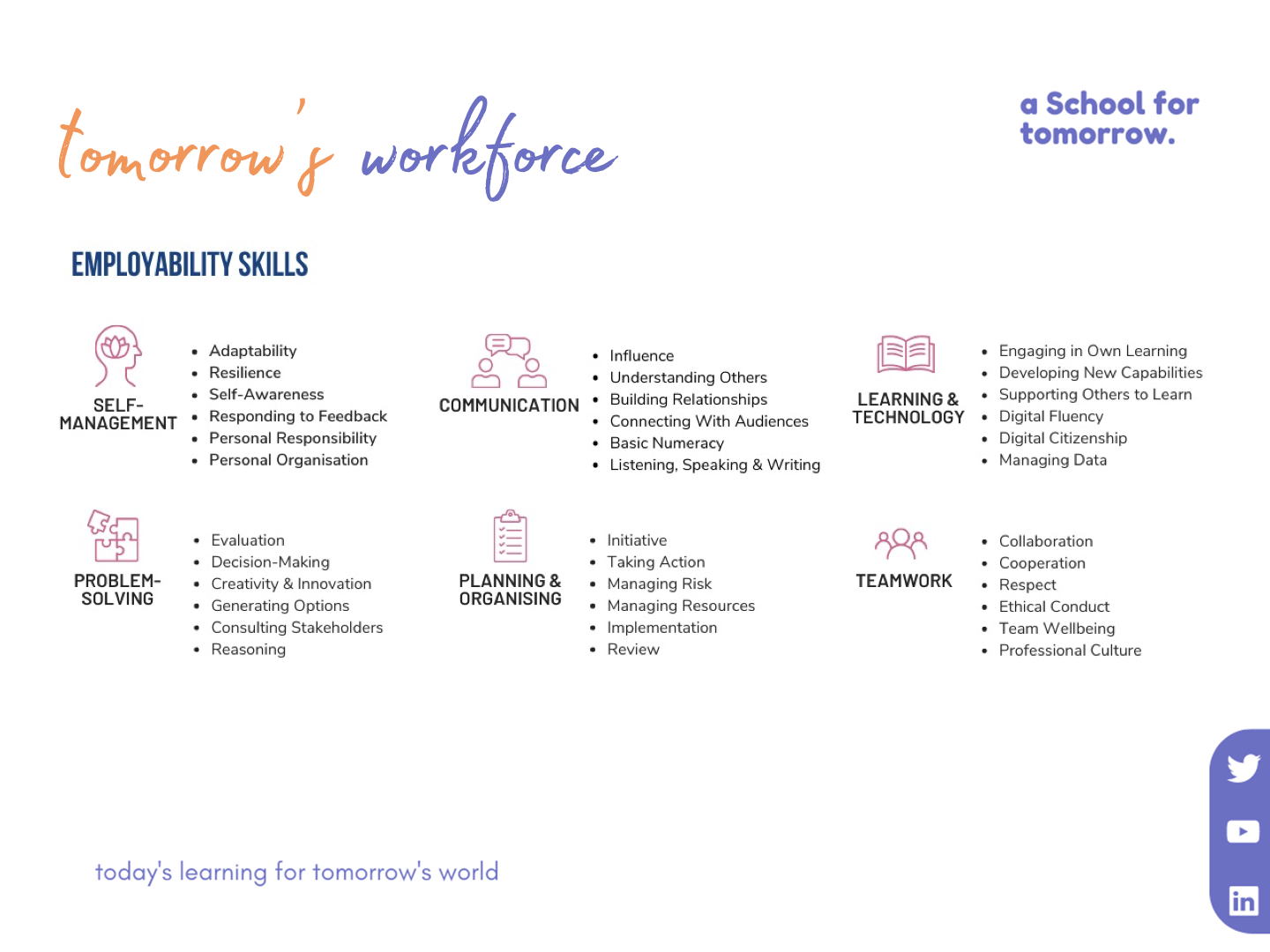 Figure 3: Tomorrow’s Workforce: The a School for tomorrow. Employability Skills
Figure 3: Tomorrow’s Workforce: The a School for tomorrow. Employability Skills
In many ways, it is these Graduate Outcomes and their associated employability skills that can be used to define the agency of students with the adaptive expertise and self-efficacy required to thrive in their world.
3. Characterising High-Performance Learning In Great Schools
Let’s consider our provocation for a second time: provocation for this article: are we really preparing students with high-performance learning that will equip, empower and enable them with the agency they need to thrive in their world? If we can identify exemplars of the agency and outcomes of high-performance learning by students in good schools, then what might characterise the high-performance learning culture of schools that generates this agency and its outcomes – great schools?
From the six Graduate Outcomes and their associated employability skills that define the agency of today’s learning for tomorrow’s world, we might begin to construct the corridors down which we might walk to experience the collective agency of a good school and (perhaps even) a great school. There are are six corresponding key aspects of school life which our research tells us might influence, inspire, direct and motivate a school and its learners towards demonstrating these graduate outcomes:
- Good People → Building Culture
- Future Builders → Building Leadership
- Continuous Learners and Unlearners → Building Learning
- Solution Architects → Building Performance
- Responsible Citizens → Building Strategy
- Team Creators → Building Systems and Operations
What might be the indicators of success in each of these corridors that good schools might measure? The following have been identified as clear indicators of success in a good school. They are not complete and exhaustive descriptors; rather, they are sufficient in their nature to indicate that what a school is doing is most likely to be working.
- Good People → Building Culture → Resilience of Consensus Around Ethos
- Future Builders → Building Leadership → Effective and Engaging Communication and Reporting
- Continuous Learners and Unlearners → Building Learning → Robust and Consistent Standards
- Solution Architects → Building Performance → Tangible and Expected Outcomes For Students and Programs
- Responsible Citizens → Building Strategy → Strategic Clarity and Connection
- Team Creators → Building Systems and Operations → Focused Community of Inquiry and Practice
These six key aspects of the agency of school life, these six corridors down which you might walk to see students, teachers, leaders, and families collaborating to achieve the guiding purpose of a School for tomorrow (better outcomes for more learners) in a continuous learning paradigm are housed in an ecosystem that is:
- Human centred: the learning context retains its focus on how all individuals can grow in character, competency and wellness to thrive in their world.
- Technologically enriched: schools use digital and technological solutions that augment and dignify human potential.
- People, place and planet conscious: all systems and operations are conceived of in terms of their capability to promote sustainable long-term interactions.
- Intentionally purposeful: the default position of the community is towards deliberate action that increases momentum towards a preferred vision.
This is what we mean by changing the game of school to honour what we have said is the new social contract of school: today’s learning for tomorrow’s world.
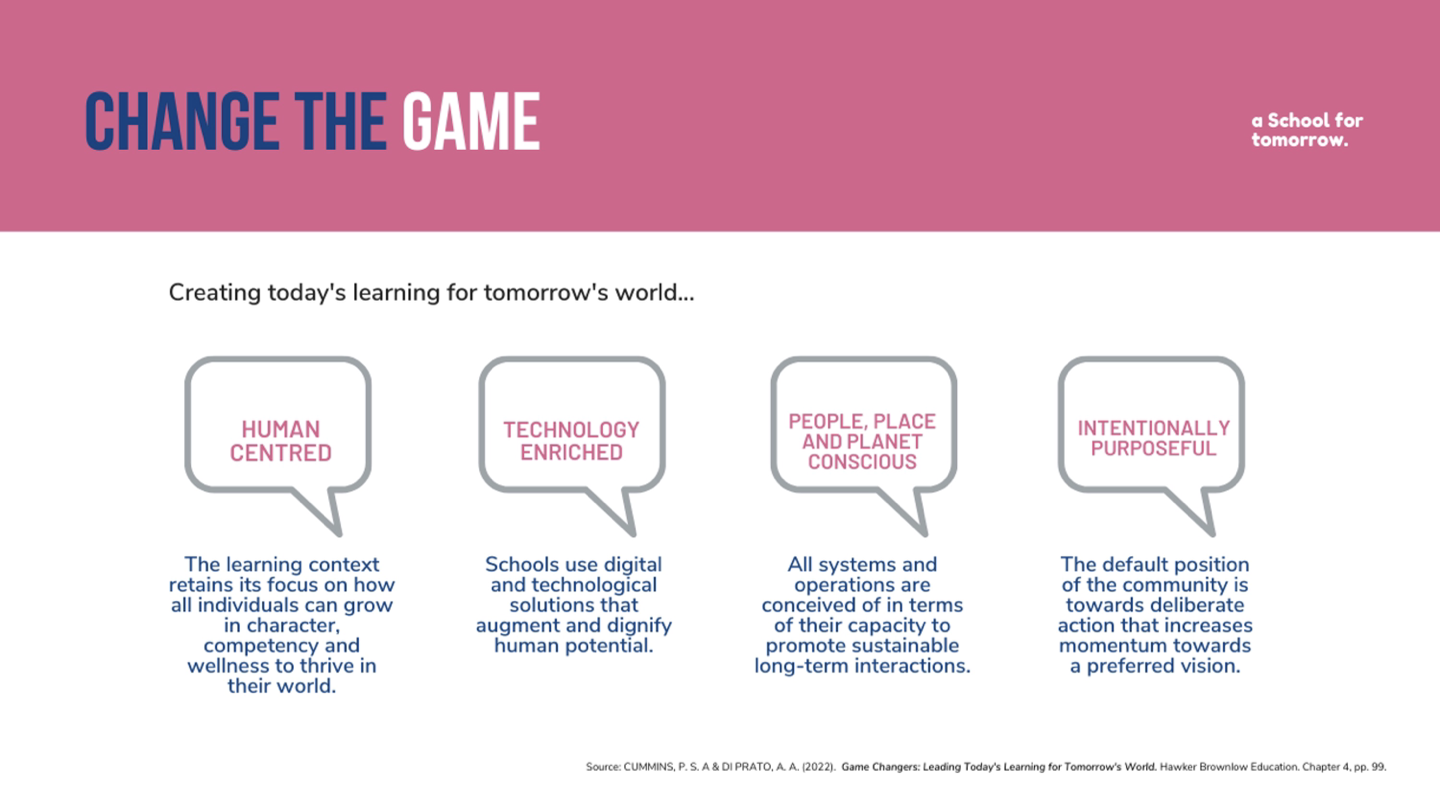
Figure 4: Creating Today’s Learning For Tomorrow’s World: The Learning Ecosystem of a School for tomorrow.
The development of global performance standards referenced to external research (such as those developed by a School for tomorrow) will be helpful in informing the development of internal statements of expectation and associated measures in a school. Yet while an external research-driven model may be relevant for all schools, the definition of agency through graduate outcomes as a key output of the ethos of a school must come from the heart of that same community. Thus, the vision and vocabulary of learning and the agency it represents must be developed from the inside-out of each and every school community.
Great schools are schools of character that consistently demonstrate an increasing propensity towards inspiring, challenging, and supporting students to belong, to fulfil their potential, and to do good and right things as young people of character, competency, and wellness. They demonstrate a shared vision and vocabulary for their preferred future, an agreed values and value proposition for what the school delivers, and change whose velocity, shape, and trajectory have all been designed and implemented to attenuate the demands and pressures of the school’s external and internal contexts.
In other words, in a great school, we all need to do what it takes to achieve our purpose. To make this happen, we need to measure what matters most within the school itself – the impact of our agency within a shared high-performance learning culture.
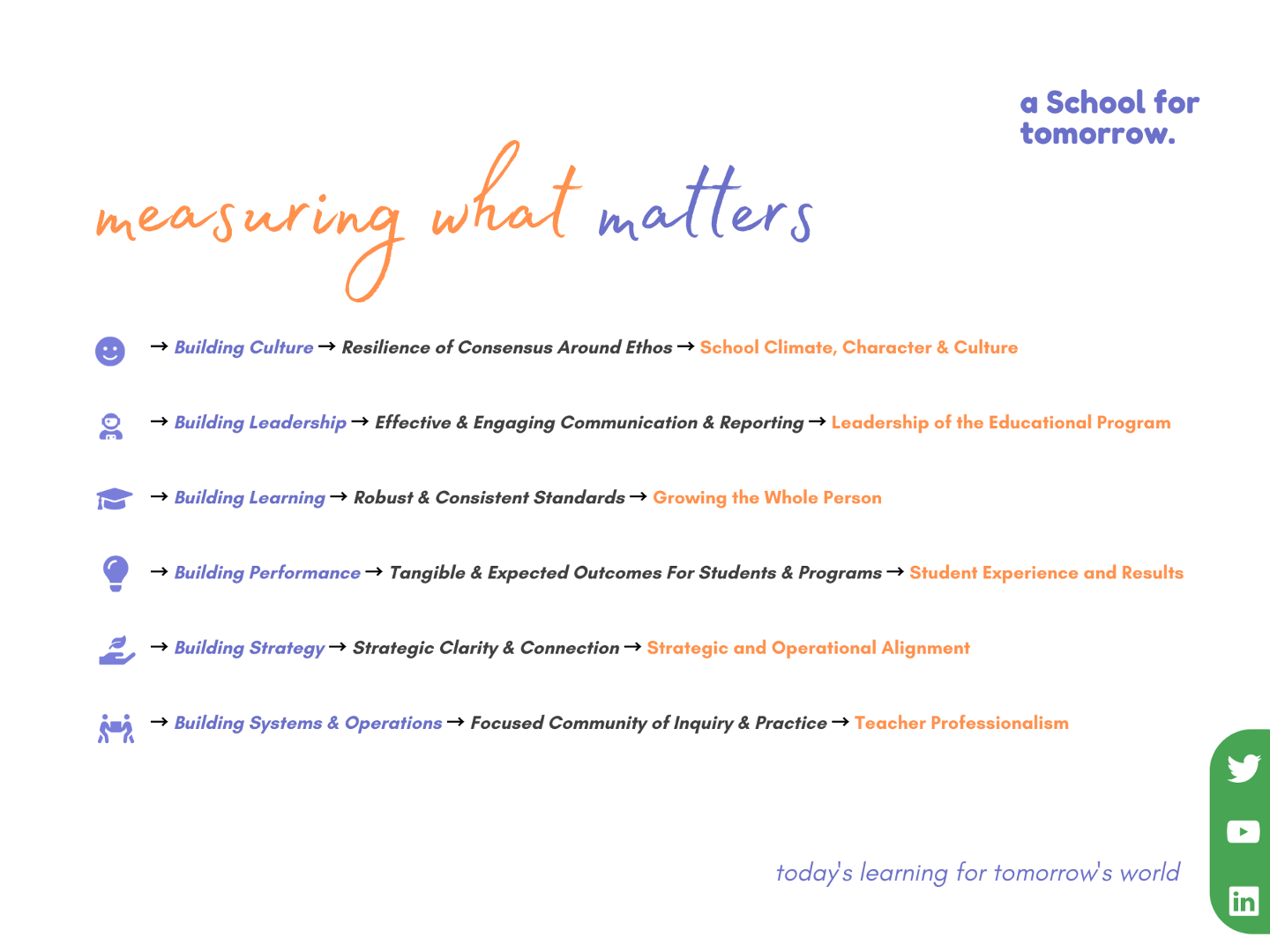
Figure 5: Measuring What Matters: The Corridors of a School for tomorrow.
What would it look like for a school to be demonstrating high-performance learning culture consistently within its six corridors? High-performance schools measure and evaluate their organisational maturity and success by tracking and gathering evidence of agency in the following ways:
- Good People → Building Culture → Resilience of Consensus Around Ethos → School Climate, Character and Culture
- Future Builders → Building Leadership → Effective and Engaging Communication and Reporting → Leadership of the Educational Program
- Continuous Learners and Unlearners → Building Learning → Robust and Consistent Standards → Growing the Whole Person
- Solution Architects → Building Performance → Tangible and Expected Outcomes For Students and Programs → Student Experience and Results
- Responsible Citizens → Building Strategy → Strategic Clarity and Connection → Strategic and Operational Alignment
- Team Creators → Building Systems and Operations → Focused Community of Inquiry and Practice → Teacher Professionalism
Expectations and norms for high-performance learning culture such as these are defined by the school's vision for learning, the strategy and culture that will achieve this. These are embedded in daily life through the lived values and relationships through which the school will realise its purpose through the formation of its people, its place, and its practice by aligning:
- Pedagogy and Assessment
- Pastoral Care and Student Wellbeing
- Curriculum, Co-curriculum, and Extra-curriculum
- Professional Learning, Coaching, and Performance
- Research and Development
- Leadership and Governance
- Funding and Resource Allocation
This is an intentional process of embedding vision that involves designing and delivering learning that allows students to reveal their competencies and experience wellness in a scope and sequence of learning experiences directed towards a unifying set of graduate outcomes. High-performance learning directed towards an education for character, competency and wellness occurs everywhere in a school, is propelled by specific pedagogies and especially through relationships; it is sustained by the curation of culture, and a shared understanding of the school’s essential identity.
Stakeholders in high-performance schools want their schools to be well run; they want leaders and governors to be good stewards of the ethos and resources of the community. Yet, above all, they want a school to look and feel like a school, not a business or a corporation. They want to know that people come first. They want to know that the service that is given and that the relationships that are constructed over years will be honoured for both the tangible and intangible contributions that are made through them. They want their school to be technologically-enhanced and still feel human – warmth, personal connection, and physical proximity are valued highly in schools everywhere.
In many ways, therefore, efficiency (or getting the job done to a minimum required standard while avoiding waste of resources) is less important than efficacy (achieving and even exceeding the desired result).
What is this desired result for the collective efficacy of a school? Schools are increasingly responding to the need to look at the bigger picture of the whole person that they graduate. In other words, character is the reason why we do school and it is the whole work of the school. At the same time, stakeholders also expect that the experiences of an education for character and competency will provide opportunities for students to achieve excellence and that their results in specific activities across learning, culture, leadership, and vocation will reflect this.
They recognise that it is the culture, climate and tone of the school that will, above everything else, allow for expectations to be set, met and even exceeded over time. They recognise also that leadership provides the strategy by which culture is intentionally developed and grown in a manner that feels right.
When people walk into such a school, it is instantly recognisable as a place where students, staff, and families of the community feel as though they belong. With this sense of belonging, comes both tangible evidence and a compelling narrative of high-performance enhanced by the propensity of the members of the community to do what is good and right individually and collectively.
This is the character capital that a high-performance school community builds together. It is the ongoing practice of deep and habitual collaboration built on shared values and a willingness to put the needs of students and their learning above all else. Its foundations, therefore, lie in the acceptance of the developmental process of school as a generator of self-awareness, relationship, service, and vocation. This is how great schools feel when we walk into them, regardless of socio-economic status, governance structure or provenance. They feel like a home for learning whose students are growing in agency, whose people are valued, and whose culture works, especially because it is powered by a philanthropic commitment to service.
A robust and resilient culture of high-performance learning needs to be described by a model which, in turn, is brought to life and embedded within an evidence-based and research-driven framework for education that guides the agency of the daily activity of a community of inquiry and practice. In this light, learners, educators, and families need to recognise and educate students both for and also in step with the holistic nature of the character, competencies and wellness that most effectively express our humanity at its best. At the same time, we must integrate the essential content – the knowledge, skills, dispositions, and learning habits – into everything “we” do to build the capability of the learners in our charge to express their emerging identities more completely through their voice, agency and advocacy.
4. The Behaviours of Agency Within High-Performance Learning
So, let’s return to our provocation a third time: are we really preparing students with the high-performance learning that will equip, empower and enable them with the agency they need to thrive in their world? If what we have seen so far speaks to what success looks like in the agency of a high-performance learning culture of schools, then how can we recognise and promote those behaviours within high-performance learning cultures that typify the agency they need to thrive?
The shared understanding of an authentic journey of growth, achievement, and success should also be characterised by language that expresses clearly what actions learners take to meet expectations and achieve graduate outcomes. Learners and teachers both need to be able to recognise individually and collectively what can and should be done to support the deliberate, intentional, and purposeful formation of the desired character defined by the school. Inherent to this, but in need of ongoing explicit articulation, is a commitment to ensuring that students receive a consistent experience of quality in their learning, enhanced by at least an occasional brush with genuine excellence. All students need to be inspired, supported, and challenged by all of their teachers to identify their passion, set goals, create plans, and review their progress towards achievement of their purpose.
Learners and teachers alike in high-performance schools need to act under the assumption that if they get their culture right, then results that are merited will flow from this. When they put results first, they rarely get the culture right. Results need to be seen as the natural and deserved consequences of a process driven significantly by intrinsic motivation to improve and succeed.
While the recognition provided by the achievement of external awards and benchmarks can provide important short term boosts in performance and opportune moments to celebrate important milestones on the journey, harnessing the power of intrinsic motivation through connection is more thoroughly satisfying and much more effective in the long term. Once learners become primarily internally motivated to develop, they will eventually exert their effort, time, and energy by willingly applying their knowledge, skills, dispositions, and habits to becoming better versions of themselves. They will be growing in character, competency, and wellness and using these to solve known and new problems: adaptive expertise. They will be organising themselves and how they learn, live, lead and work to optimise their character, competency, and wellness so that they can thrive in their world: self-efficacy.
Eventually, they will begin to self-actualise because they can self-determine. Self-determination, however, is a distant goal for learners at first, no matter how driven they are within the human developmental process towards autonomy. They will need to earn this autonomy over time, most likely within relationships of character apprenticeship. We see character apprenticeship as a progression from articulation to reflection to exploration as a novice, then from modelling to coaching to scaffolding as an expert. It is a strong yet non-judgmental way of explaining how a student learns about agency in relationship with others.
Character apprenticeship also emphasises the importance of teaching and leading others on the road to mastery of agency as a feature of character education itself. In other words, there must be a deliberate pedagogical shift in the power dynamic of the learning relationship as the expert hands over the opportunity to teach others to those who were once their novices and are now experts in their own right. We also think that the movement from novice to expert is not necessarily linear, nor does it preclude a learner being both simultaneously. We see from the evidence of our study that many supposed experts still regard themselves as being learners who are also benefiting from being in relationship with those whom they consider to be greater experts.
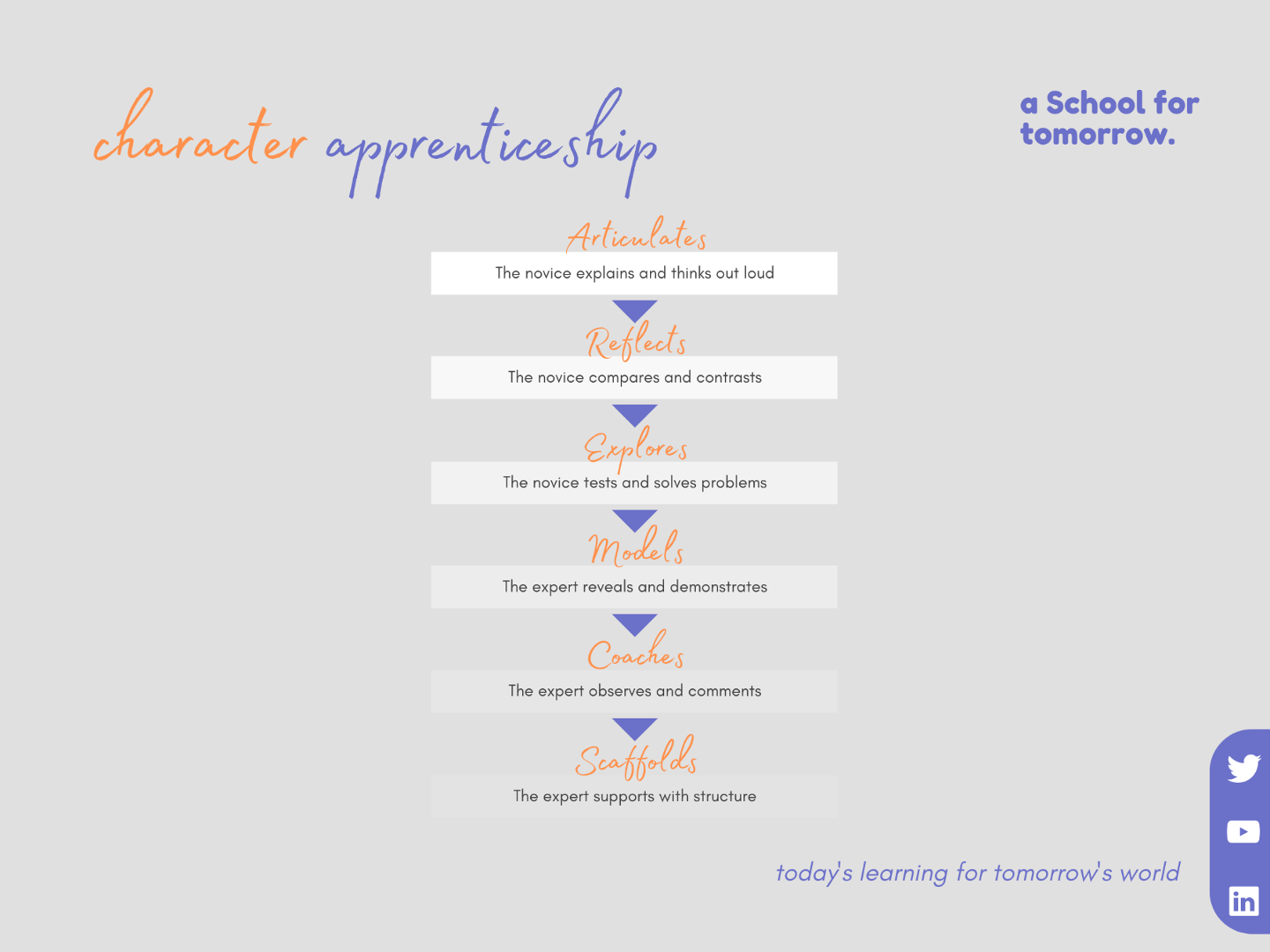
Figure 6: The a School for tomorrow. Model of Character Apprenticeship
So, the daily learning work that comprises the behaviours of agency needs to be powered by an awareness of processes of self-determination, of character apprenticeship, of the journey of exploration, encounter and discovery, and others such as these. In particular, learners, educators, and their families need to come to recognise the behaviours that comprise the key steps in each of them. For example, within character apprenticeship, what does it mean to articulate, reflect, and explore? What does it mean to model, coach, and scaffold? How would you know if you were doing such a thing and how might you judge the type of effort required to grow in mastery of each of them over time?
We do know that once these behaviours can be described and measured, these efforts should be characterised by deliberate, intentional, and repeated rehearsal. The role of the expert becomes less and less assertive as the learner comes to exercise mastery over self (the knowledge, skills, dispositions and habits that will evidence the experience of learning) as well as mastery over content (the desired character, competency, and wellness). They need to be able to see that eventual mastery of those behaviours will comprise a fair approximation of what might be called the “best versions of themselves” in terms of both their own inner drive and their capacity to meet the external expectations of their graduate outcomes. In time, they also need to be able to accurately predict these behaviours in their own performance and teach them to others.
This understanding of both the interdependence of one’s own life to the lives of others and the role of selflessness in interacting with them is also critical. It’s about realising that serving self is less satisfying than serving others, while acknowledging that we also need to look after ourselves and our needs to belong, fulfil our own potential and do what is good and right in our lives, so that we can also look after others. The wrestling between the inner drive to leave a mark and the need to measure up to external expectations is rarely resolved but ever-present in the agency of high-performance learning culture. This wrestling works best for most of us, however, when the inner drive of purpose is tuned to the external needs of people and place and planet. The rewards of such service are greater and lead to the development of a sense of vocation in how we learn, live, lead and work.
These efforts will be intensely disciplined at times, and very playful at others, and learners need to know when to switch between these modes. They will be able to improvise on their existing performance in pursuit of the fresh energy and new solutions that will counteract the inevitable drift towards unconscious competence and then eventual decline in performance. They will be focused on the setting and attaining of goals, and they’ll use a combination of a growth mindset, a willingness to gather data and seek feedback, and an unwillingness to make excuses for themselves to motivate themselves to craft their techniques over many, many hours of practice.
Learners and teachers in their teams will assume high levels of accountability that match their desired levels of autonomy and decision-making within a competitive and collaborative team environment. They will expect others to support the mission of the team, and contribute to a positive culture that is clearly aligned with the purpose of the school. They will expect them, in due course, to meet and even exceed the agreed standards of the team, and inspire, support and challenge them to do so through the character apprenticeship we have already mentioned.
They will be, therefore, typically at least a little tough on themselves and have a great sense of urgency that is informed by a compelling sense of purpose that recognises the immediacy of the moment and the pressing opportunity to make a difference in the lives of "our people, right now". They will feel as though what they are doing is both purposeful and vital, and their passion and enthusiasm will have a tangible impact on the engagement and motivation of those around them. They will believe in and respect the voice, agency, and advocacy of students, teachers and families working in true partnership to bring out the best in every student and they will not give up or cast judgement on those students who are still to commit to travelling on the pathway to excellence.
This all needs to be supported by a parallel community of inquiry and practice among teachers that creates, nurtures and sustains the enduring dispositions that underpin the culture of the school. It also needs to be manifested in the curation of high-performing teams that will both extend and reinforce a shared attitude towards sustaining the drive for improvement and success.
Parents in particular will form judgments based on what they can see of teachers and from this they will extrapolate much. They want to know that their child is known and loved for who they are and who they are becoming; the way in which a student is greeted and recognised by the staff and their friends goes a long way towards this. They want to know that their child is achieving and learning through both their successes and their mistakes; the way in which the school communicates early and often about such things with attention to detail and consideration for fair process is critical in this respect.
The fact that the school thinks about its future and how best to provide for its students and their families provides reassurance at a higher level; the presence of a strategic plan and an ongoing conversation about it through the communication channels of the school is essential, even if it may not always elicit excited responses. The manner in which students participate, achieve, and present themselves both in and out of school speaks loudly to the tangible application of values in action; the daily commitment of the staff to encourage students to be involved, set and attain goals, and carry themselves with aplomb does not go unnoticed.
And the way in which people talk about the teachers and the school to each other is perhaps the most important way; there will always be gossip and incidents will flare up from time to time, but in a school whose community is high-performing, the talk about the teachers will reflect the admiration for their knowledge about education, their care for children, and their dedication and hard work.
To be the key agents of the agency of schools, teachers, therefore, will need a common professional culture which supports mastery of routines and habits of their own work, and leadership through teams as defined by a staff competency profile that demonstrates an uncompromisingly high-performance approach towards co-designing, pursuing, celebrating and reflecting on the achievement of excellence by students and by their school.
In particular, the agency of teachers has a decisive impact on the agency of students within a school and of the school itself. We can define this agency according to six future-fit “professional principles” that teachers can use when inspiring, challenging, and supporting students to learn, grow in character and achieve their best. A professional principle includes a positive statement of intent, a statement of disposition, and a commitment to application across practice. These six principles were (again) derived from the global research of a School for tomorrow. and align to the six standards, graduate outcomes and employability skills. They apply across a teacher’s professional responsibilities in the academic, co-curricular and pastoral/advising curriculum and take into account the holistic educational experience of students. Teachers normally deploy all of these principles of practice in their work to some extent, but their sense of professional purpose and decision-making about specific approaches and choices for attaining learning outcomes may well be influenced most by only one or two of these principles.
- Optimism: I affirm the potential of my students to have integrity in how they learn, live, lead and work. I believe that they are fundamentally interested in the idea of character and what it means to be a good person. I honour this in my intentional practice across all my responsibilities to them as an educator for civic, performance, and moral character.
- Validation: I affirm that my students can grow in what they know, can do, believe and are becoming. I believe that they need to understand the complexity of our world if they are to become the people they need to be. I help them to validate their progress through experimenting, making mistakes, and becoming transformed by learning from the process.
- Voice: I affirm the need for my students to grow in their own sense of who they are and how they express this in their voice. I believe that we need to defer judgement as they grow and improve in their capacity to align their values with their intentions and their actions. I help them to test boundaries, explore possibility and tell their stories as to how they are travelling on their journeys.
- Agency: I affirm the need for students to make and carry out their own choices in life. I believe that they should set constructive and attainable goals for themselves. I encourage them to reflect on their emerging sense of agency, as they adapt to their changing circumstances with creativity and judgement.
- Advocacy: I affirm my students’ citizenship and contribution to their communities. I believe that their most powerful method of learning comes from placing their character, competency, and wellness into the context of advocacy for others. I help them to form and put into practice balanced perspectives about how they might belong and bring both values and value to their local, regional, and global communities.
- Structure: I affirm that my students benefit most from a clear, consistent, and rigorous approach to learning together. I believe in the desirability of planned and responsive learning that deliberately shapes the development of future-fit character, competency, and wellness. I engage in and help to build a structured community of inquiry and practice in all of my professional activities.
We have observed consistently that, as a consequence of this agency that itself begets the agency of students, teachers in great schools have a persistent and practical focus on learning that works. They share in a strong culture of teacher education, research, collaboration, mentoring, feedback, and sustained professional development. They recognise that while they work on the transformation of their learners, they themselves also need to be transforming themselves as adults in very specific ways. They reinvent what they do so that their work achieves excellence defined by the attainment of the future fit aspirations for the thriving of their learners in the form of their graduate outcomes, rather than the perpetuation of the status quo or decontextualised league lists of achievement in external examinations and competitions.
5. Successful Schools With Agency And High-Performance Learning
Let’s return to our provocation for a fourth time: are we really preparing students with the high-performance learning that will equip, empower and enable them with the agency they need to thrive in their world? If we know what success looks like in the agency of a high-performance learning culture of a school, and we recognise and promote those behaviours that typify the agency learners need to thrive, then how successful are schools in creating both high-performance learning culture and the agency to thrive in the world?
The global research program of a School for tomorrow. reveals that there are many good schools who are getting at least some of the fundamentals right of high-performance learning culture. They seek to build high standards across all of the key aspects of school life, and enact and sustain these standards with quality experiences and consistent behaviours that are demonstrable within the habits and routines of its daily life. All of this tends to emanate from an institutional disposition towards helping learners to demonstrate desired graduate outcomes that indicate that they are prepared with the character, competency and wellness needed to thrive in their world.
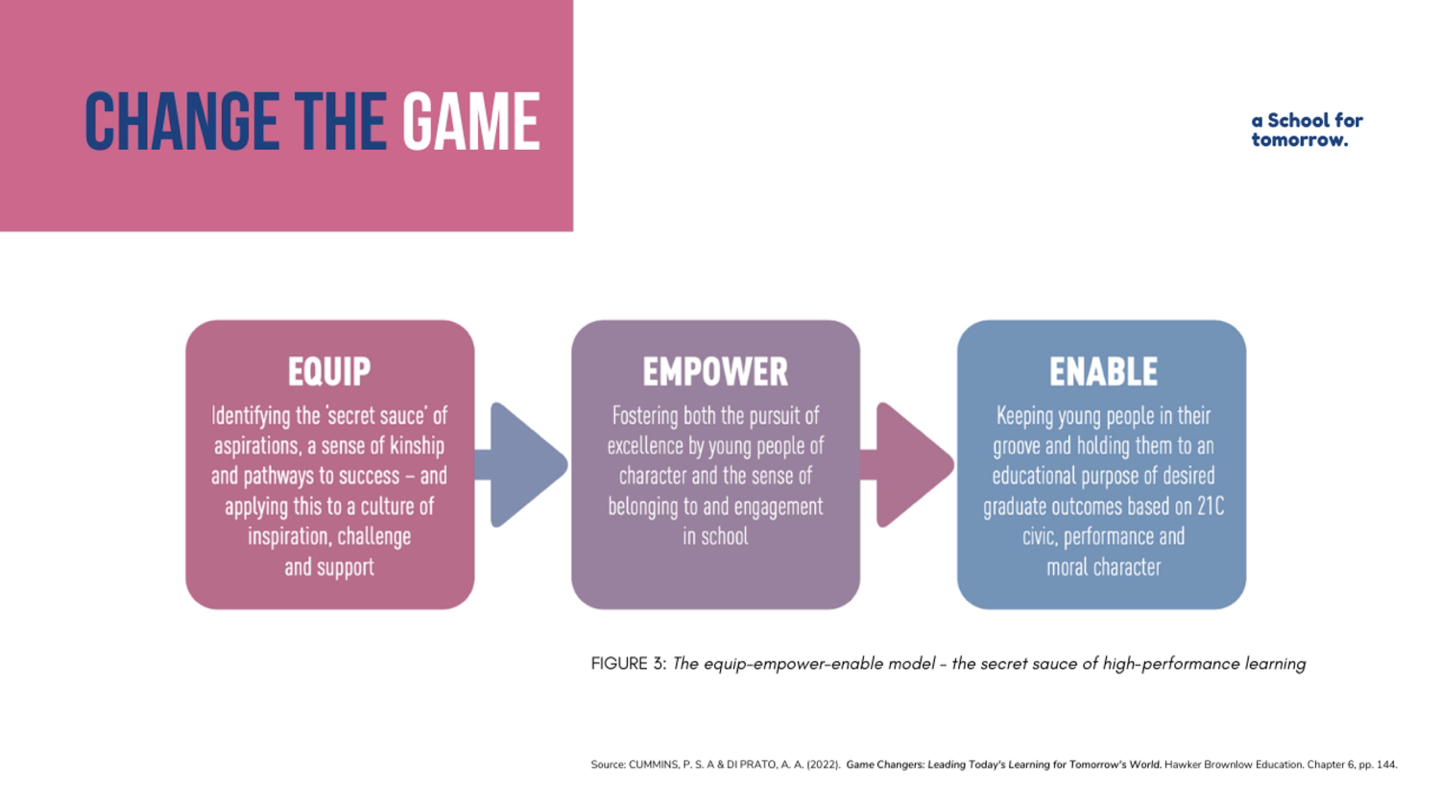
Figure 7: The a School for tomorrow. Equip-Empower-Enable Model – the Secret Sauce of High-Performance Learning Culture
In addition, some great schools go beyond this and are able to assemble the ingredients of high-performance learning culture. They can identify the "secret sauce" that blends aspiration, a sense of kinship, and pathways to success, and apply this to the flow of relationships of character apprenticeship between experts and novices that inspire, challenge, and support them by keeping them in their groove and holding them to their purpose. This increases the propensity for transformational learning that fosters both the sense of belonging to and engagement in school by young people of character and their pursuit of excellence.
What we believe is that it is the willingness of the school to embrace high-performance learning across the board that provides the energy to cook up this secret sauce. For this to happen, stakeholders in schools need to believe that school culture, climate and ethos are a significant condition of and contributor to school performance and student achievement. The student learning journey should be defined by the positive way in which students travel along their educational pathway and interact with programs, teachers and their peers through experiences and relationships that equip, empower and enable them and that help them to see possibilities and move towards them with confidence. There should be significant ongoing scope for schools to develop a complementary understanding of the way in which an evidence-based and research-driven theory of high-performance learning might be attached to and give even greater effect to this innate sense of culture by connecting and warranting the experiences of expert teachers to the process and outcomes of this high-performance learning.
Perhaps the methodology of proponents of high-performance learning who strive to walk down the six corridors of a great school can be summarised as: “how a school learns about its fundamentals and its secret sauce through the willing adoption of an unrelenting process of improvement in pursuit of better performance bounded by agreed values and related culture”. That’s the agency of a great school.
It’s also important to note that the journey towards greater agency for many good schools currently within the global network of a School for tomorrow. continues. We are seeing five patterns emerging:
- The high-performance of teachers, supported by a school community that creates positive and challenging aspirations for learners in turn generates the behaviours and results of high-performance learning among students. In other words, agency begets agency.
- When schools use the methodology of high-performance learning in some places but not consistently across the whole of learning, it limits the disposition towards agency and practice of adaptive expertise and self-efficacy.
- Results tend not to change when high-performance learning methodology that drives agency has not yet been adopted consistently.
- Methodology tends not to change when teaching mindset, practice, and habits of reflection and evaluation have not yet changed sufficiently.
- Teaching practice tends not to change when leadership mindset, practice and evaluation have not yet taken a transformative big step forward and up.
To this final point, there are some big questions that leaders in schools today need to ask themselves. Are we happy to stand on the sidelines and watch some people play the high-performance game in the distance? Or do we ask all to join in and make agency the object of the main game? Do we allow some players to exercise limited agency on their own as outliers or do we act as agents of high-performance learning together throughout the whole work of the school? What would it take to do this? How can we help more people to feel they must or have to be a part of the high-performance learning culture and the agency that flows from it? How can we resolve, together, to take the big step forward and up to test our possibility?
It’s a set of human problems with structural implications for leaders. We need to welcome into our schools the right people and help them to align with our purpose through a shared understanding of people and place and planet and putting this all into practice by developing the character, competency and wellness of learners towards agreed graduate outcomes. Structural solutions may create the potential for alignment in behaviours and culture but should not be the end in their own right. Thus, to pay due deference to Dan Pink’s Drive:
- We need to shift mindsets and foundational beliefs about what should be done in the work of schools and the motivations that lie behind these beliefs by creating transformational moments that are focused on belonging, achievement of potential, and the doing of good and right. This speaks to equipping people with agency through purpose.
- We need to overcome natural and normal habits of closed thinking, comfort, control, compliance, compartmentalisation and the instinct towards conservatism (including personal preferences, incentives, fears, and traditions) that are deeply ingrained in individual and collective senses of identity by entrusting staff with the agency, parameters and accountabilities that should help their aligned purposes to prevail. This speaks to empowerment of people with agency through autonomy.
- We need to create a sense of the possible and the desirable by showing people an alternative model of schooling, defining the first principles from which this model might be built, and providing benchmarking from which they can iterate the use of time, space and other resources to build competency in their practice and experience success in new competencies. This speaks to enabling people with agency through mastery.
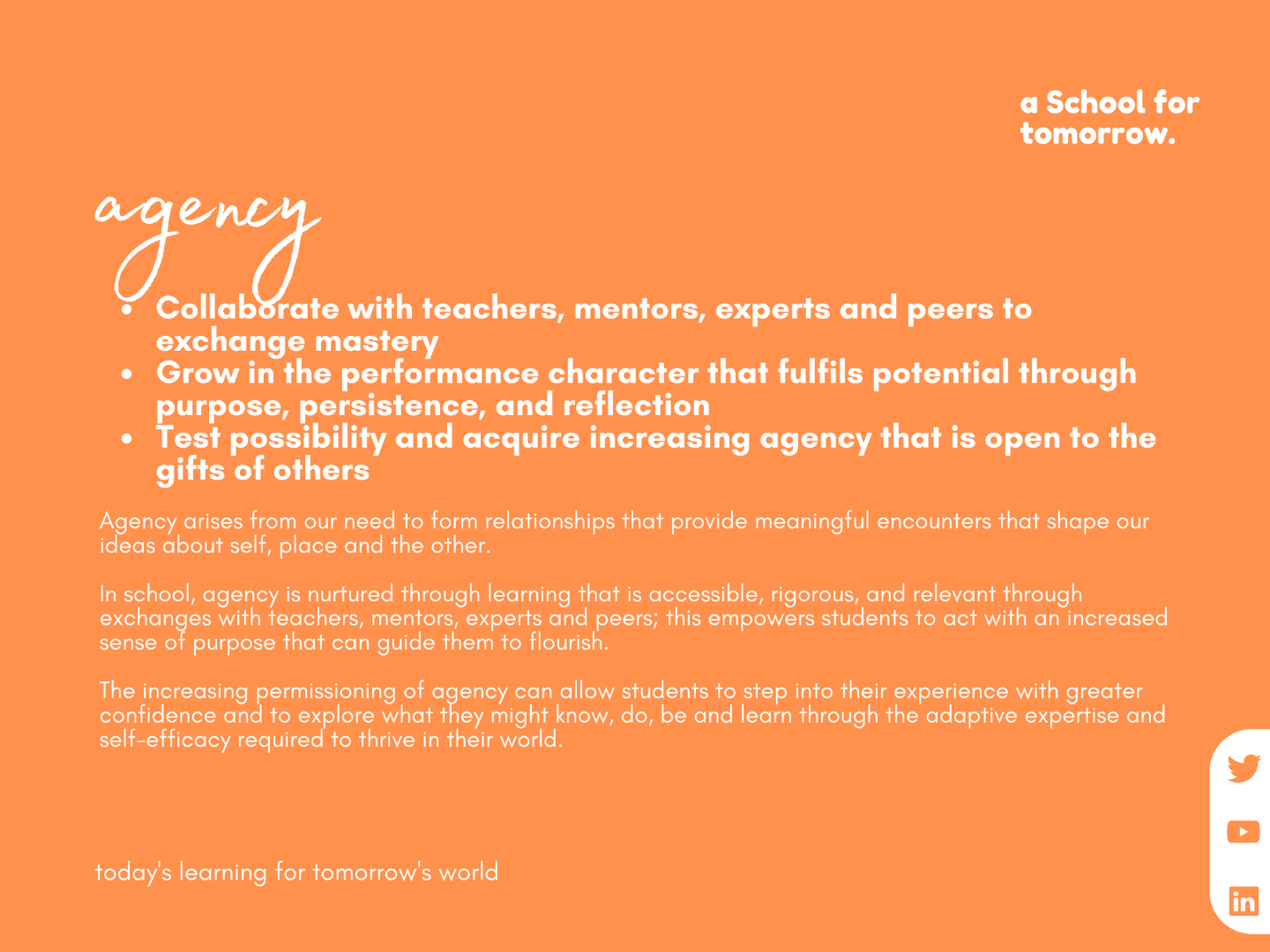
Figure 8: Agency in a School for tomorrow.
To conclude, the agency imbued by high-performance learning equips, empowers and enables students to test what’s possible and act with an increased sense of purpose that can guide them to thrive in their world. We in schools must cultivate the development of this individual agency within the interdependence of relationships and positive group culture. We need to acknowledge the impact that the collective experience, inspired by the challenge of a set of agreed standards for excellence, and influenced by leadership that constructs and tells a compelling narrative from yesterday to today to tomorrow, can have on the courage and conviction of individuals to engage in an ongoing process of growth in the adaptive expertise and self-efficacy that are characterised by the purpose, persistence and reflection of high-performance learning.
Let's go!
Phil
Related Content
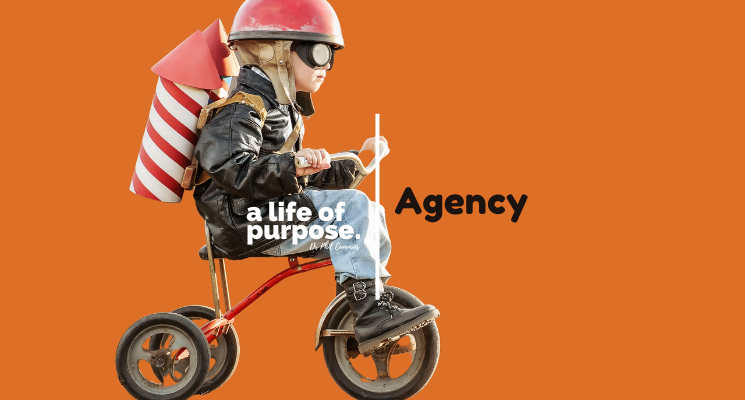
Article
Test What’s Possible
Products & Services
Discover our Strategic Educational Development ProgramsLike what you've read?
Let’s keep the conversation going.
